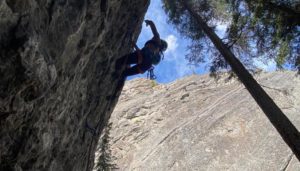Some Info on Climbing Everest Without O2
A short history about climbing Everest without bottled oxygen

In 1996, Rob Hall and Scott Fischer led commercial expedition teams attempting Mount Everest. Each team had a leader, several guides and eight paying clients. Many of the members reached the summit on May 10, but five individuals, including the two leaders, died as they tried to climb down the mountain during a storm. Hall and Fischer died during the descent, but were credited with ascents of Mount Everest.
In 1998, Americans Francys Distefano-Arsentiev and her husband, Sergei Arsentiev, climbed Everest and died on the descent. Francys became the first American woman to climb Everest. It was on May 22, their third attempt, when they reached the summit. They’d spent three days in the death zone. Exhausted, they summited, but were separated on descent. After Sergei reached camp, he realized Francys was gone and went back up. Not long after, an Uzbek team found Arsentiev frozen and struggling to survive. They made an attempt to help her, but were too tired to do anything more. They passed Sergei on his way up. No one would ever see Sergie again.
The next day, a team including Ian Woodall and Cathy O’Dowd found Francys still alive, but barely. Sergei was gone, but his ice axe and rope were next to his wife Francys. Woodall, O’Dowd and their team could do nothing, but Woodall and O’Dowd gave up their chance of summiting to stay with Francys and give her as much care as they could. In 2007, Woodall wanted to give Francys some sort of dignified burial. After a short ritual, Woodall lowered Francys’ body to where she was no longer visible to climbers passing. Full story here.
Cathy O’Dowd later became the first woman to climb Everest from the north and the south. In a an article written in 2000 for The Guardian, O’Dowd said:
“Don’t leave me,” she said. Her skin was milky white, and totally smooth. It was a sign of severe frostbite and it made her look like a porcelain doll. Her eyes stared up at me, unfocusing, pupils huge dark voids. “Don’t leave me,” she murmured again… “I am an American. I am an American,” the climber suddenly said… The decision to leave Fran came upon us without much discussion. The Uzbek climbers and Lhakpa had long been of that opinion. What hope I had faded in the face of her incoherence, her physical incapacity. Now Ian and Jangbu straightened up and turned away. She had stopped talking and seemed to have sunk into unconsciousness. The thought of going on was intolerable. I had lost the will to reach the summit. Besides the physical drain of the cold, I was emotionally shattered. I had never encountered anything like this. I had passed bodies, I had had friends not come back, but I had never watched anyone die. Nor had I had to decide to leave them.
Edmund Hillary once said, “I am rather inclined to think personally that maybe it is quite important, the getting down, and the complete climb of a mountain is reaching the summit and getting safely to the bottom again.” Some might not consider Francys’ summit a true ascent because she died on the descent. But, if Hall and Fischer’s ascents counted, and they did, then why wouldn’t Francys’?



